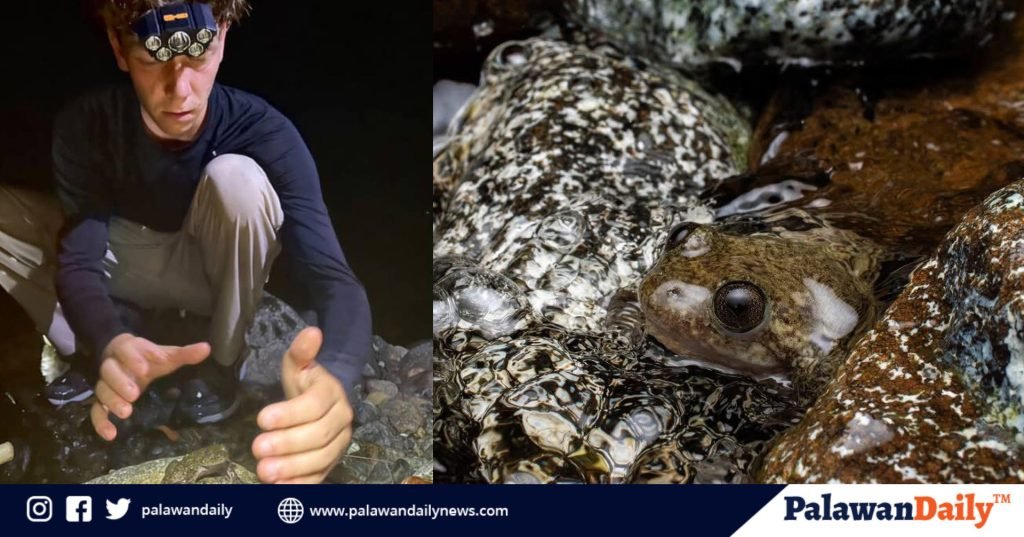In the streams that rush down Sultan Peak in the municipality of Narra, a small brown frog is sending a clear message about water, forests, and what could be lost if they are not protected.
The Barbourula busuangensis, known locally as the Philippine flat-headed frog or “Barbie,” lives only in Palawan and nowhere else in the world. Earlier this year, student intern Tiemen Kreuwel of Wageningen University & Research, working with the Centre for Sustainability PH, Inc. (CS), conducted a survey of the frog’s distribution in Narra. His findings confirmed that Sultan Peak’s waterways are exceptionally clean and biologically rich, underscoring the area’s ecological importance.
The frog survives only in very specific habitats, particularly cool, fast-flowing streams with submerged rocks, little sediment, and unpolluted waters. Scientists describe it as a “bioindicator,” a species whose presence signals healthy rivers and intact ecosystems. Where the frog disappears, researchers warn, pollution and habitat disturbance are not far behind.
Kreuwel’s work adds to growing scientific attention on B. busuangensis. A recent survey on Busuanga Island documented hundreds of individuals but also noted deformities in some frogs, raising concerns over water quality and possible stress from human activity. Other studies have revealed just how sensitive the species is. Even small changes in turbidity, temperature, or stream depth can reduce its numbers.
The Centre for Sustainability sees the frog as more than a scientific curiosity. For the group, the discovery highlights the urgency of protecting Sultan Peak and similar watersheds. Its Student Internship Program brings in young researchers like Kreuwel to expand data collection and strengthen conservation arguments.
Palawan is often described as the Philippines’ “last ecological frontier,” but its forests and rivers are under steady pressure from mining, logging, and infrastructure projects. While the province has declared a moratorium on new mining permits, enforcement remains uneven, and many watersheds remain vulnerable.
The flat-headed frog remains poorly understood. Its breeding habits are largely undocumented; no tadpoles have been observed, and researchers believe the species may develop directly from eggs to froglets. Its low, infrequent call, about 1.2 seconds long at roughly 250 Hz, was only recently recorded by Filipino scientists.
Conservationists argue that these gaps in knowledge make protection even more urgent. Sultan Peak’s streams may appear resilient today, but small changes upstream, like siltation from logging roads, pollution from mining runoff, clearing of forest cover, could erase the frog before scientists fully understand it.
A frog pressed against a rock may not look like a signal. But in Narra’s mountain streams, it is proof that the water is still clean, and a reminder of how quickly that proof could vanish.
